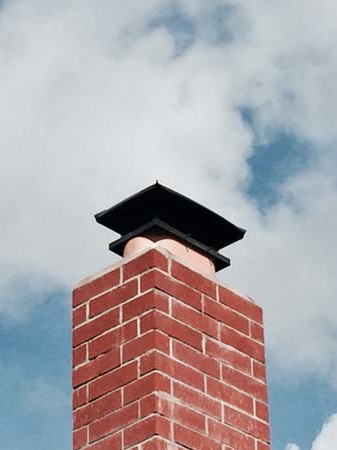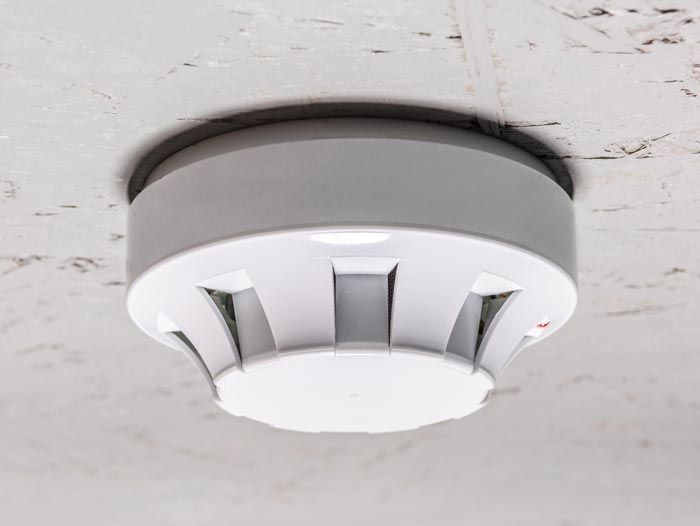Often called the invisible killer, carbon monoxide is an invisible, odorless, colorless gas created when fuels (such as gasoline, wood, coal, natural gas, propane, oil, and methane) burn incompletely. In the home, heating and cooking equipment that burn fuel can be sources of carbon monoxide.
- CO alarms should be installed in a central location outside each sleeping area and on every level of the home and in other locations where required by applicable laws, codes or standards. For the best protection, interconnect all CO alarms throughout the home. When one sounds, they all sound.
- Follow the manufacturer’s instructions for placement and mounting height.
- Choose a CO alarm that is listed by a qualified testing laboratory.
- Call your local fire department’s non-emergency number to find out what number to call if the CO alarm sounds.
- Test CO alarms at least once a month; replace them according to the manufacturer’s instructions.
- If the audible trouble signal sounds, check for low batteries. If the battery is low, replace it. If it still sounds, call the fire department.
- If the CO alarm sounds, immediately move to a fresh air location outdoors or by an open window or door. Make sure everyone inside the home is accounted for. Call for help from a fresh air location and stay there until emergency personnel declare that it is safe to re-enter the home.
- If you need to warm a vehicle, remove it from the garage immediately after starting it. Do not run a vehicle or other fueled engine or motor indoors, even if garage doors are open. Make sure the exhaust pipe of a running vehicle is not covered with snow.
- During and after a snowstorm, make sure vents for the dryer, furnace, stove, and fireplace are clear of snow build-up.
- A generator should be used in a well-ventilated location outdoors away from windows, doors and vent openings.
- Gas or charcoal grills can produce CO — only use outside.
Facts
A person can be poisoned by a small amount of CO over a longer period of time or by a large amount of CO over a shorter amount of time.
In 2010, U.S. fire departments responded to an estimated 80,100 non-fire CO incidents in which carbon monoxide was found, or an average of nine calls per hour.
Home Heating Equipment
Have fuel-burning heating equipment and chimneys inspected by a professional every year before cold weather sets in. When using a fireplace, open the flue for adequate ventilation. Never use your oven to heat your home.
Carbon Monoxide Alarms
Carbon monoxide (CO) is a poisonous gas that cannot be seen or smelled. It is produced by fuel burning appliances, fireplaces and vehicles. If appliances that burn fuel are maintained and used properly, the amount of CO produced is usually not hazardous.
- The most common causes of CO poisoning are the indoor use of charcoal or gas grills and generators in garages or near air intakes.
- Symptoms of poisoning include headache, nausea, dizziness, weakness, confusion, light-headedness, shortness of breath.
- High levels of CO can cause death in a few minutes.
- Low levels can poison a person over a long period of time.
- If your CO alarm sounds move outdoors or to a fresh air location, then call 9-1-1.
- CO alarms are required in all new and existing apartments and rental homes.
- The owner must provide the alarm and the renter maintains it.
- CO alarms are required outside of each bedroom with at least one alarm for each floor.
- Units are either battery powered or plug-in to an outlet with a battery backup.
- Alarms do not need to be mounted on the ceiling unless you purchase a combination smoke and carbon monoxide alarm (these must be mounted on the ceiling or high on the wall)


Prevent CO poisoning
- Never burn charcoal or use a barbecue inside your home
- Never use a gas oven to heat your home
- Never sleep while using an unvented gas or kerosene heater
- Never idle a car in an attached garage
- Make sure chimneys and flues are not blocked